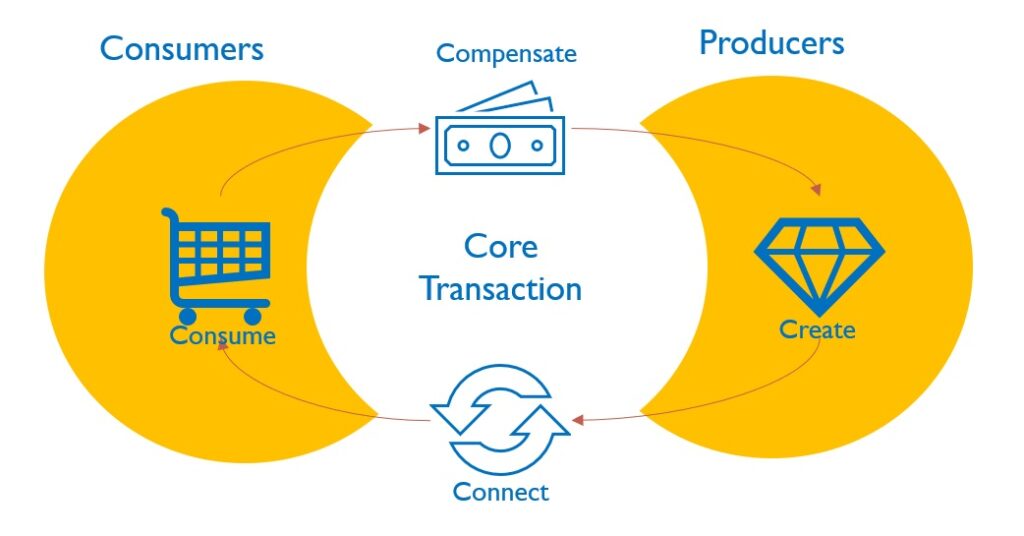As per Oxford Dictionary “Platform /ˈplatfɔːm/ is a raised level surface on which people or things can stand.”
Cambridge Dictionary defines ‘platform’ as:
- platform noun (STRUCTURE) a flat raised area or structure
- platform noun (SHOE) a style of shoe with a very thick high sole (= bottom part)
- platform noun (IDEAS) an opportunity to make your ideas or beliefs known publicly
- platform noun (COMPUTING) the type of computer system or smartphone you are using, in relation to the type of software (= computer programs) you can use on it. OR
- a particular computer technology that can be used with some types of software programs but not with others
- platform noun (COMMUNICATION) a method of communication or entertainment, for example television, radio, or the internet
- platform noun (POLITICAL) a set of ideas and plans that a politician or party promises to act on if elected
Clearly, “Platform” is a very common Homonym making it extremely important to understand and define what we mean by “Platform” at The Strapla Consulting in the Platform Strategy and Platform Business Model context.
For us at The Strapla Consulting, “Platform” in “Platform Strategy” or “Platform Business Model” means a business structure where multiple parties can stand and (inter)operate collaboratively (like a raised surface used for people or things to stand). In Digital context, Platform is heavily used for a set of computing technologies which can interoperate. Though this does not literally applies in our Platform Strategy context but the ‘interoperability’ part does hold true in Platform Business Model.
Thus, we may understand Platform Business Model as one such business model which supports all the business players (consumers and providers) to interoperate collaboratively, creating value by facilitating exchange between these players. Here each player gains value by the addition (and existence) of another player thereby exponentially incrementing the overall value gained by the business.
A terse definition of Platform, thus, is “A business model that creates value by facilitating exchanges between two or more interdependent groups, usually consumers and providers.”

To make such exchanges possible, platforms create and curate large scalable networks of users and resources that can be accessed on demand. Platforms create communities and markets with Network Effects that allow users to interact and transact. Network Effect typically increases the marginal value gained by the overall business when an additional consumer or provider is added.
One key attribute of a Platform Business Model is “Externality”. Successful platform businesses facilitate exchanges by reducing cost and/or by enabling external innovation. Leveraging digital technologies these ecosystems induce scalability in a way traditional business simply cannot. Core business functions of a Platform Business Model exist outside the platform itself. For example, Marketing is an external function in Platform Businesses—successful social media doesn’t require marketing because marketing happens by word of mouth and network effects.
Platform is NOT a technology but a complete business model. It is often misunderstood and misused as a piece of technology (occasionally in SaaS businesses) when they claim that they have a ‘platform’ for doing XYZ. Usually such software businesses (several SaaS businesses) are NOT platform but traditional liner (or pipeline) businesses where value is created internally and organically in a linear value chain. Linear or Pipeline businesses follow traditional value chain where they keep an inventory of goods or services which shows up in their balance sheet and they sell these goods and services downstream to their customers. In contract, the Platform businesses don’t own any inventory or assets.
In today’s era supply chain is not the accelerator of business value, it doesn’t matter how much a company owns; what matters more is how many resources or players can a company connect to. Uber, Ola, Airbnb are some of the greatest and most quoted examples of Platform business. None of these businesses own much assets- Uber and Ola do not own any Cars (unlike Ford which has a large capital of assets in terms of factories, showrooms, staff, car inventory to sell etc); Airbnb does not own a single room yet they rent more rooms than Marriotts or Hiltons of the world.


